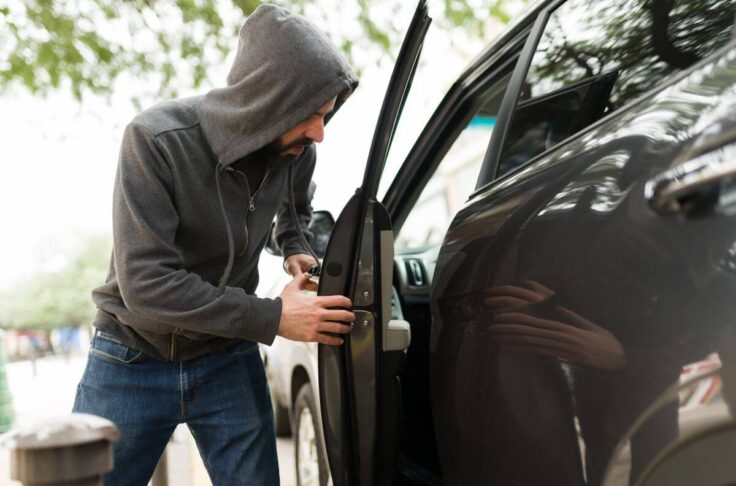Insights interview on the Italian microcar sharing market
Summary
Italy stands out as the largest market for microcars in European carsharing. We asked Antonella Comes, CEO of the Italian shared mobility provider Pikyrent, about their microcar experience, the reasons to include the Citroën Ami in their fleet, insights from their users, and challenges to the European microcar sharing market.

The carsharing industry is complex, featuring a diverse range of business models and vehicle types implemented on the streets. To address and explain some of these complexities, INVERS is excited to release a White Paper on “Microcars in European Carsharing” on April 11th 2024. This free-of-charge, 35-page paper helps carsharing operators quickly understand key market dynamics, insights, and trends.
Our White Paper also highlights insights from the Italian market. Pikyrent represents an insightful example of a European microcar pioneer, and brings 1.5 years of operations experience to this interview. They offer a combined fleet of microcars and mopeds to their customers in Bari.
Pikyrent is both a sharing mobility operator and a SaaS provider of the white label platform (B2-Ride) for vehicle sharing, enabling shared mobility management. We were very happy to sit down with their CEO, Antonella Comes, for this interview.
Why did you decide to focus on microcars in your carsharing fleet? Can you describe your microcar fleet to us?
In the Italian shared micro-mobility scenario, Pikyrent is a pioneer in using microcars, specifically in quadricycles in the L6 category. We use the 100% electric Citroën Ami micro car, which is recognised by the market for its modernity, compactness, and eco-sustainability.
In choosing this vehicle for our fleet, we appreciated its small size, which is certainly a big plus when looking for parking in the city. Its smooth drive with automatic transmission makes it suitable for users of all experiences and age groups. We wanted to offer our users the possibility of moving around in compact vehicles with zero CO2 emissions, which is beneficial for urban travel. Also, the vehicle has low energy consumption and can be recharged quickly to avoid leaving the vehicles out of service for too long, or putting too much strain on recharging points.
We focused on microcars because they are a smarter, more convenient and inclusive alternative to the more common micro-vehicles, such as e-scooters, e-bikes, and mopeds. A fleet of microcars is agile, modern, safe, and environmentally friendly. In fact, quadricycles are more practical and comfortable than other micro-mobility vehicles: they offer the possibility of carrying two people, comfortably seated and protected from severe weather.
With the Citroën Cargo model, which is also in our fleet, we wanted to reach small traders or craftsmen by offering them the possibility of using a shared vehicle for business trips or deliveries. In the near future, more microcar models will most likely be added to our fleet, all strictly full electric, including quadricycles in the L7 category, which, unlike the L6s, can also drive on country roads for longer trips.
What are the main lessons learned after running about 1.5 years of carsharing with microcars?
The carsharing service through microcars provided over the past year and a half in Bari – the first city where we launched our service and where we decided to evaluate our business model – has recorded significant data. The data revealed 18,000 total rentals with microcars, more than 70,000 km travelled, and a CO2 saving of 20 tons – a winning model for us.
Microcars have certainly become a robust and perhaps safer alternative to other micro-mobility vehicles – in synergy with public transportation. We have also seen how they can meet the needs of generations of users who are older or not very confident in using a moped, for example.
In fact, our latest data shows that the target group of our microcar users is cross-generational, covering a wide range from 18 years old (or even younger if there had been no municipal restrictions) to those over 70. In recent months, we have found that microcars are also an effective alternative to travelling compared to owning a car. These cars are often too large to park, which stops residents from freely moving around the city, and in most cases, these have a combustion engine.
There has also been a change in the mindset of the younger generation, Gen Z, who no longer attach great importance to vehicle ownership. With this in mind, and looking to the future, sharing mobility thus becomes the winning model of urban movement, also championing the environmentalist cause.
What’s the status of carsharing with microcars in Italy?
Only a few operators in Italy use microcars for carsharing. Apart from us, another major example is Enjoy with their XEV YoYo model, heavy quadricycles with swappable batteries. Given the positive characteristics of this type of micro-mobility, which is also complementary to other forms of micro-sharing, we may see more microcar projects in the future. The compactness and manoeuvrability of these vehicles, as well as the lower cost of purchasing, compared to the classical e-cars, will make other sharing operators include them in their fleet.
Currently, the only obstacle to the spread of microcars in sharing services, such as the L6 light quadricycles model, could be linked to the ‘battery autonomy’ factor, which in the case of Citroën AMI, for example, is 75 km. In our case, in an average-sized city such as Bari, they proved perfect. But in bigger cities such as Rome or Milan, where the distances to be covered between one neighbourhood and another are significant, they might prove unsuitable for sharing.
It is known that the sector for manufacturing these microcars is still very new. Currently, only a few models of e-scooters, e-bikes, or mopeds are designed specifically for sharing fleets, i.e. with the particular characteristics of robustness, safety and battery life. We are confident that, as demand from sharing operators increases, there will also be a growth in production of specific models of microcars.
Electric microcars for sharing are intended to play an important role in reducing CO2 emissions from urban travel. They will contribute in convincing more and more people to give up their owned car in favour of a shared vehicle because the user experience is, in fact, the same or even better.
How do your users use the microcars?
After 1.5 years since the launch of our microcar sharing service, we analysed the rental data:
- Most users use the microcar to travel an average distance of 4-5 km, which is typical in an urban area.
- Having both electric microcars and mopeds in our fleet, we found that, although we have more mopeds (100 vs. 60), over 60% of the total number of rentals is with the microcar. The quadricycle is the favourite vehicle because it is more comfortable and the user experience is closer to the private car.
- We have loyal users who use microcars more than four times a week and who, when interviewed, stated that they would like to rent microcars more frequently in the future.
- Approximately 40% of the active users are between the ages of 20 and 30 years, and 70% are male, mostly commuters and students who go to work or university in the morning and use the vehicle in the evening to enjoy free time and get home safely.
- AMI Cargo vehicles are used by small craftsmen and tradesmen to transport tools and goods.
What challenges does the industry need to overcome to see a higher share of microcars in global carsharing fleets?
Car manufacturers should design and market microcars that are suitable for sharing, and this is already the case with e-scooters, bikes, and mopeds. The focus should now be on vehicles, with integrated IoT boxes on board, that are robust and secure. In addition, the micro-car industry should invest heavily in the spare parts supply chain to make them available at all times, as sharing vehicles could be more prone to accidents and the need for regular maintenance.
They should also invest in research and development of electric microcars. Charging an electric vehicle is time-consuming and greatly affects the vehicle’s availability on streets, resulting in a loss of earnings for operators. Additionally, the manufacturers should focus on sensors, but without burdening the purchase costs. Advanced sensor technology on microcars would also help to quickly identify tampering or theft attempts to use the vehicle outside of the rental – this applies to all vehicles intended for sharing. There are many challenges, but only in this way can we see more sustainable microcar sharing projects flourish.
Stronger cooperation between all players in the sector – vehicle manufacturers, on-board sensor manufacturers (IOT/GPS boxes/vehicle alarm and monitoring systems and video surveillance systems), insurance companies, operators of sharing services, municipalities, and even users with their suggestions and experience – is needed. Altogether, this could contribute to the growth of green, micro and sustainable mobility, from a monetary point of view as well.
For both the sharing mobility economy and the people’s attitude who want to protect the environment while living their lives with ease, this is a win-win strategy.
Further insights into microcars for carsharing
Thank you, Antonella, for the great chat, your perspective on the market and this insightful interview.
For more information and interesting findings about the market, we encourage readers to check out our White Paper on “Microcars in European Carsharing”.


